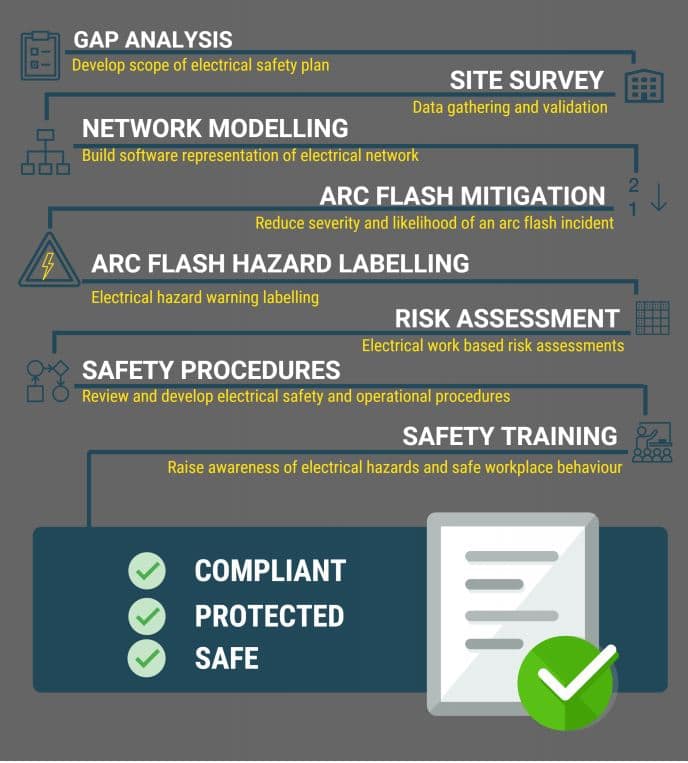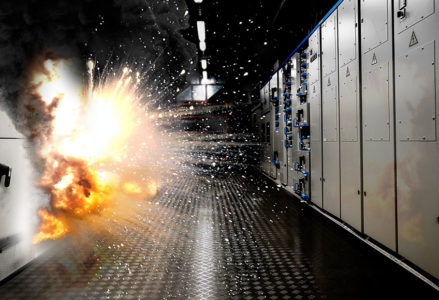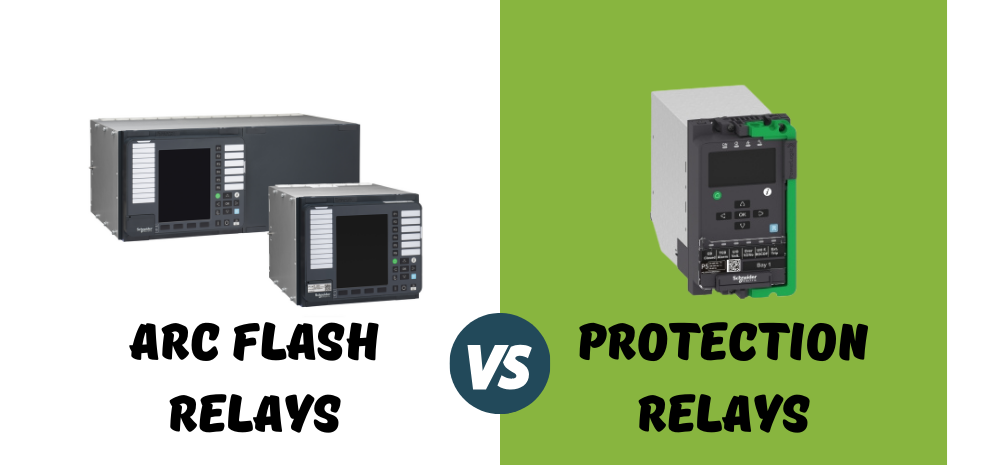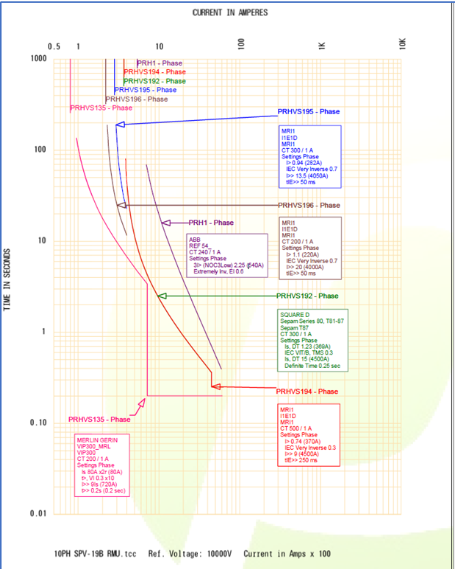The definition of mitigation is ‘to make milder, less severe or less violent.’ When applied to electrical workplace safety, arc flash mitigation involves taking steps to minimise the level of hazard and/or the risk associated with an arc flash event.
An arc flash is an explosive release of energy that occurs in electrical equipment. It can cause extreme heat, brilliant light, dangerous sound levels, molten shrapnel, poisonous gases and a blast pressure wave. It is caused by an electrical short circuit event. Arc Flash events can be very damaging to the health of those working at or near electrical equipment.
Short circuit events can be caused through a range of situations such as overvoltage or a bolted fault. The heat generated by an arc flash can vaporise the copper conductors and insulating materials, producing a hot, toxic cloud. Where the flashover results in a blast, it will be accompanied by explosive noise and shrapnel.
Customer Journey to Electrical Safety
Arc flash mitigation is step five on our customer journey to electrical safety. The purpose of an arc flash hazard study is to identify areas of a client’s electrical distribution network where incident energy levels pose a potential problem or concern. As described in further details here, incident energy is a measure of the energy that would be experienced during an arc flash at a specific working distance. It’s measured in calories per square centimetre (cals/cm²)
Once areas of concern are identified, safety measures to mitigate against arc flash can be recommended.

Mitigation Solutions
Generally, Premium Power recommends the development of arc flash risk assessments to minimise arc flash hazards. Other than de-energising the electrical conductors, a number of engineering solutions can be utilised to overcome incident energy levels posing a potential problem or concern.
It should be noted that PPE (Personal Protective Equipment) must always be considered as the last line of defence.
- Arc Resistant Switchgear
- Protection Setting Adjustment
- Remote Switching
- Arc Detection Systems, and
- Arc Suppression Blankets
Arc Resistant Switchgear is switchgear tested to IEC 62271-200 for HV switchgear and IEC/TR 61641 for LV standards and provides passive protection against internal faults on MV and LV equipment. Passive protection limits the internal arc fault to the compartment where the fault is generated, provided that the panel doors are closed and sealed properly.
Protection Setting Adjustment involves analysing and where possible adjusting the current protection settings of the incoming and/ or upstream protection devices to reduce incident energy levels at locations where levels pose a potential problem or concern. Adjustments are made so that the protective devices;
- Are capable of detecting arcing currents at specific locations in the electrical network
- Trip times are reduced to clear faults in a minimum time
Note: Changes to protection settings for arc flash mitigation purposes are carried out whilst ensuring discrimination throughout the network is maintained at all times.
Remote Switching
Remote Switching should be considered, where possible, to reduce the exposure of the operator to an arcing event during switching operation. A safe distance is a location where the operator would not be affected or injured if an arc flash were to occur. Remote Switching would be recommended where no protection setting adjustments could be made without adversely impacting on the site’s protection coordination.
Arc detection systems use a combination of light and fault current to send a trip signal to the main protective device to open, with the trip signal usually taking less than 10ms.
This method extinguishes the arc in a shorter time (trip signal + breaker opening time) than conventional overcurrent methods thus reducing the incident energy emitted.
Arc Suppression Blankets can act as a protective barrier for personnel carrying out maintenance or works close to a location where incident energy levels pose a potential problem or concern. Rated in kilo-Amps (Arc Current) and available in three ratings – 15 kA, 25 kA and 40 kA, arc suppression blankets can protect workers against the elements of an arc flash – heat, pressure wave and fire. Arc Suppression Blankets are layered with each layer designed to support and protect the next layer. As each layer is destroyed the energy is dissipated creating the time necessary for the overcurrent protective device to activate.
Read more about our client’s journey to electrical safety here
For more information on arc flash click below













